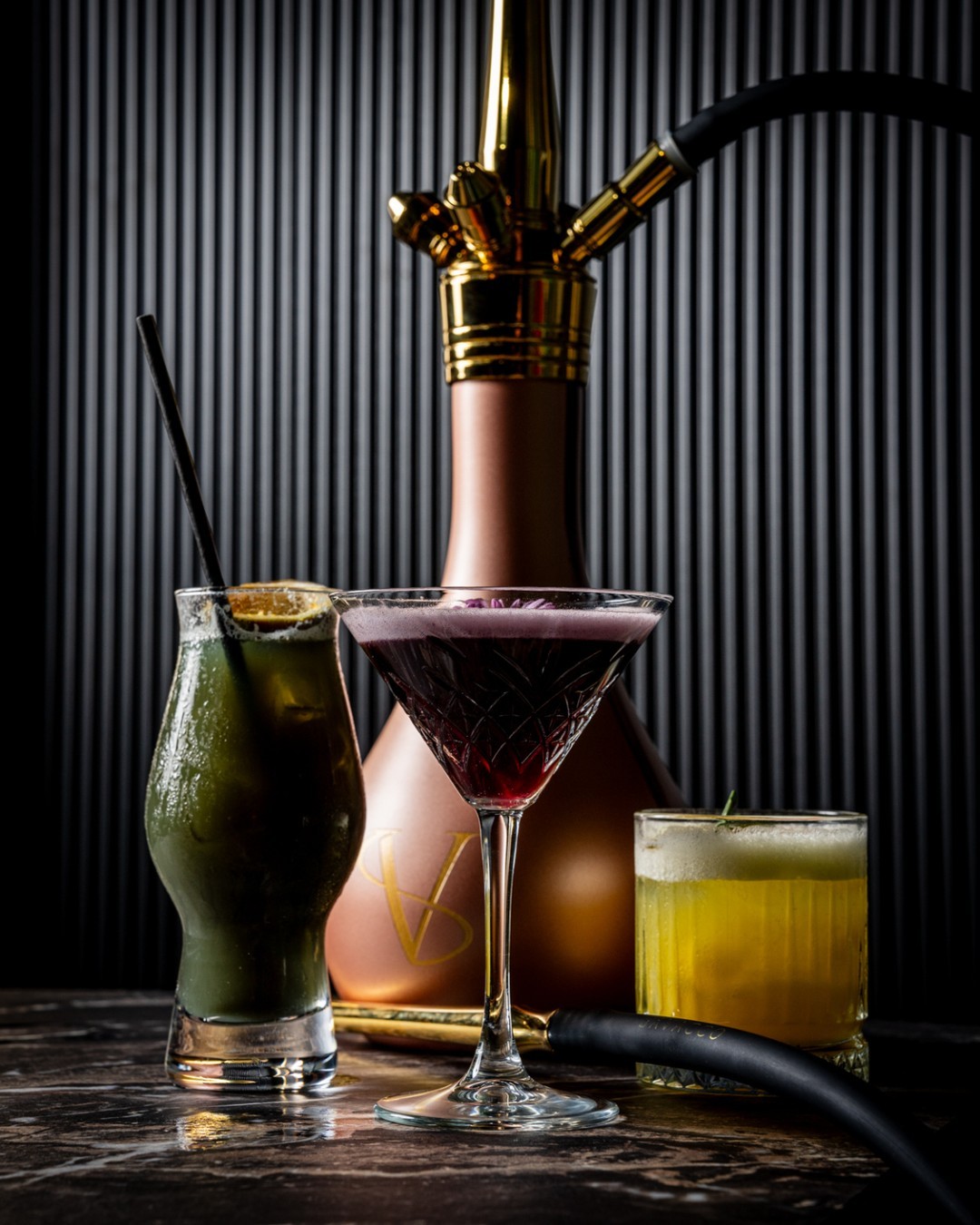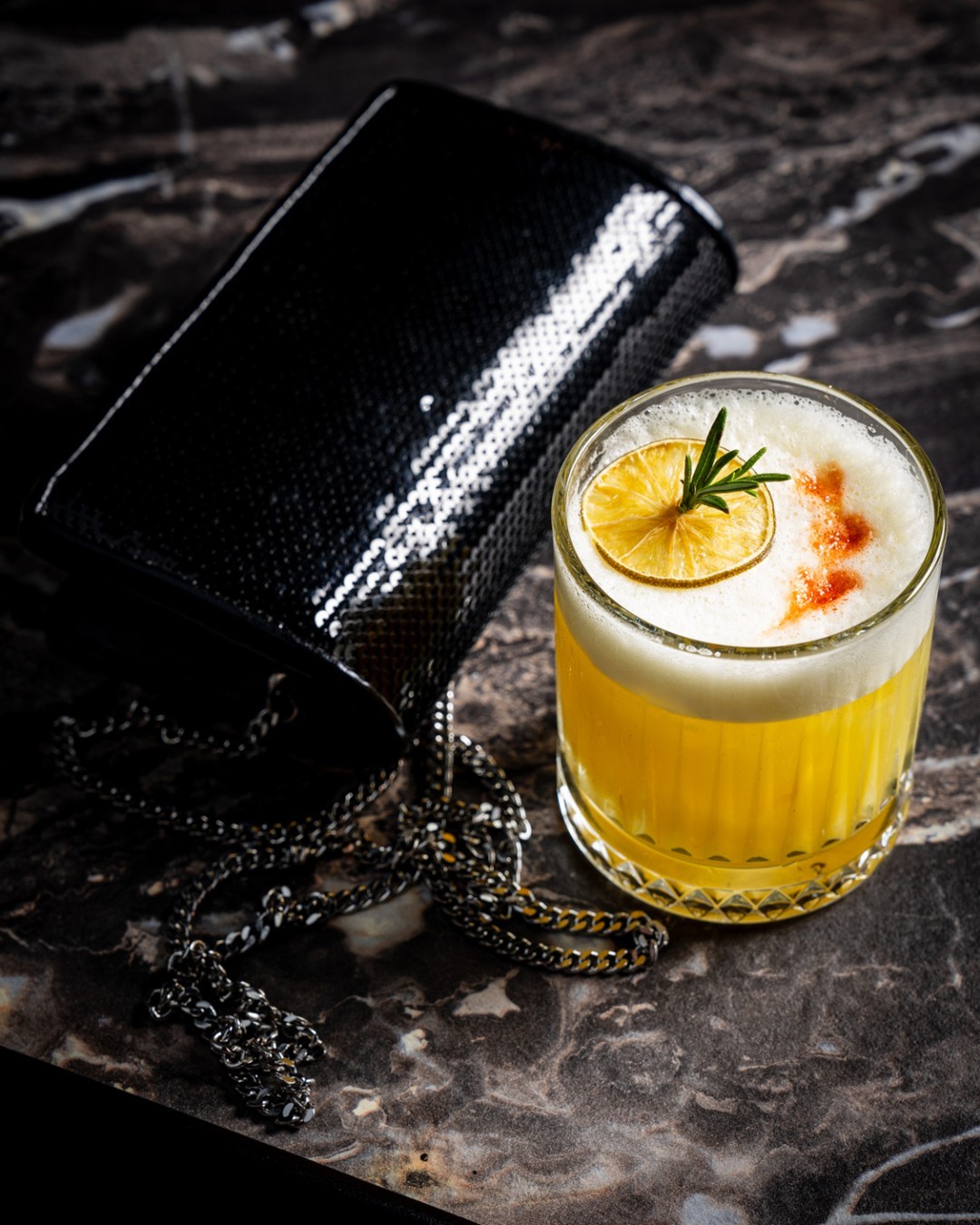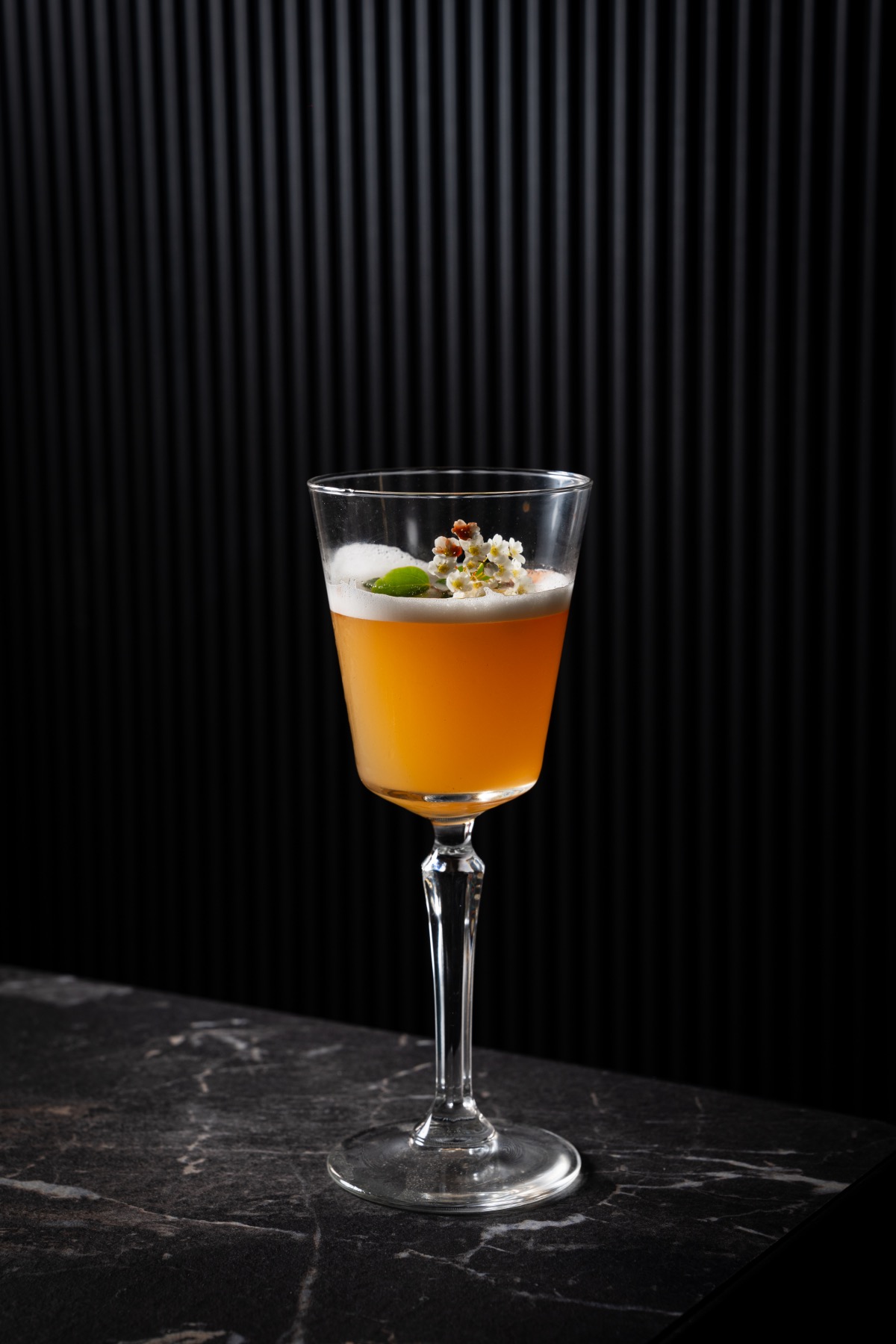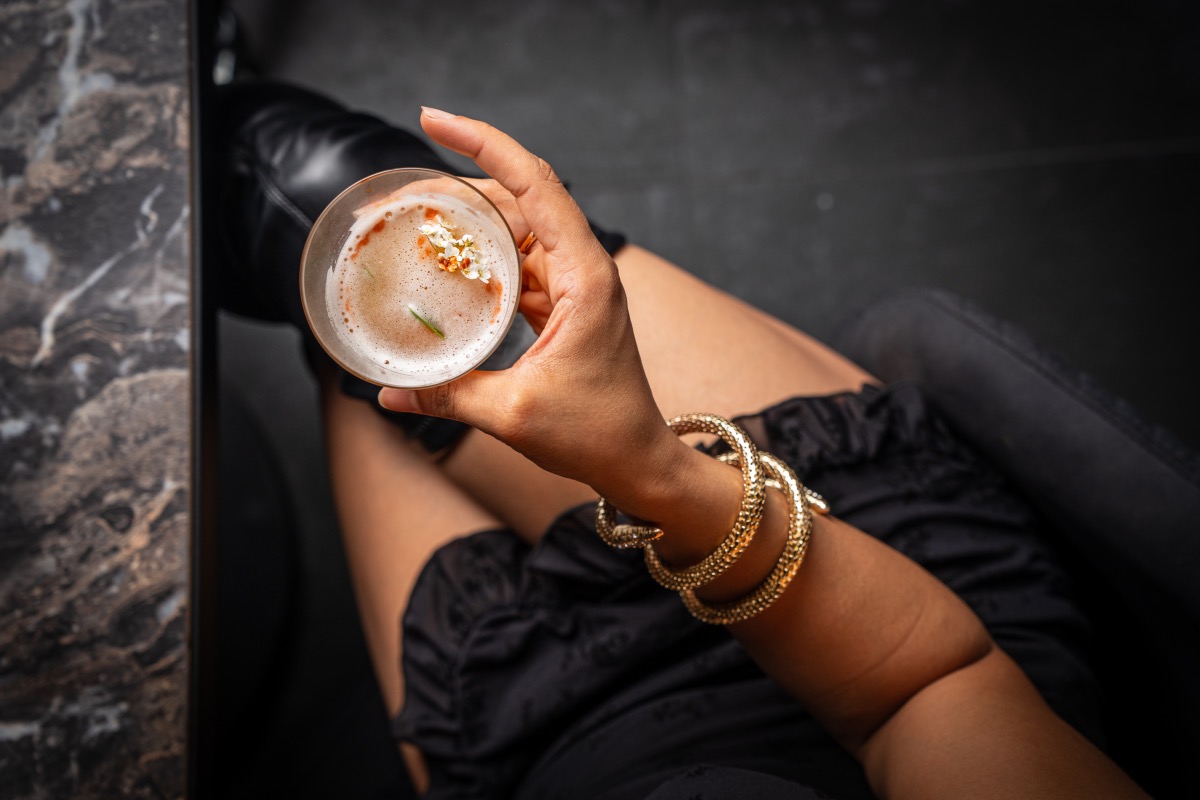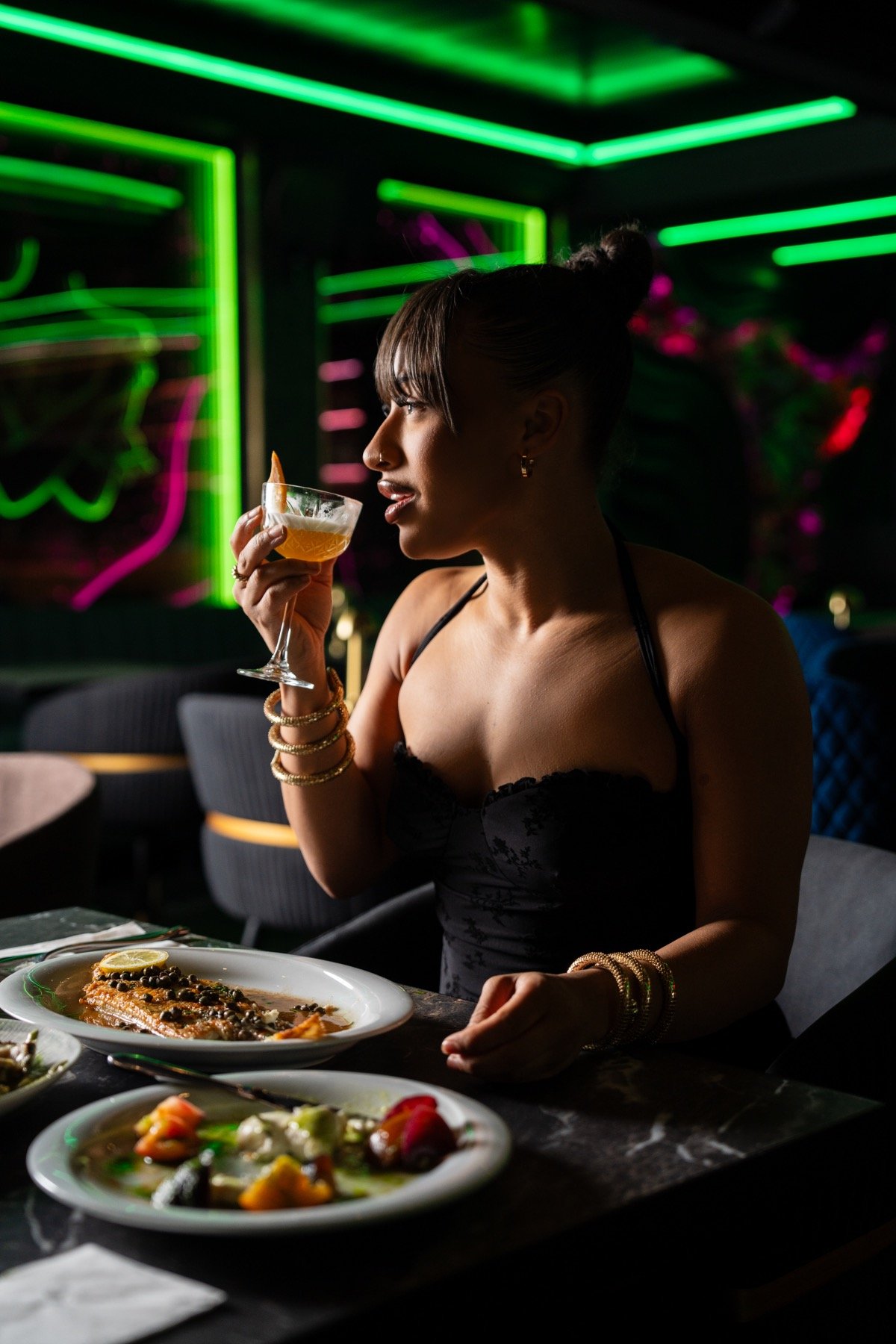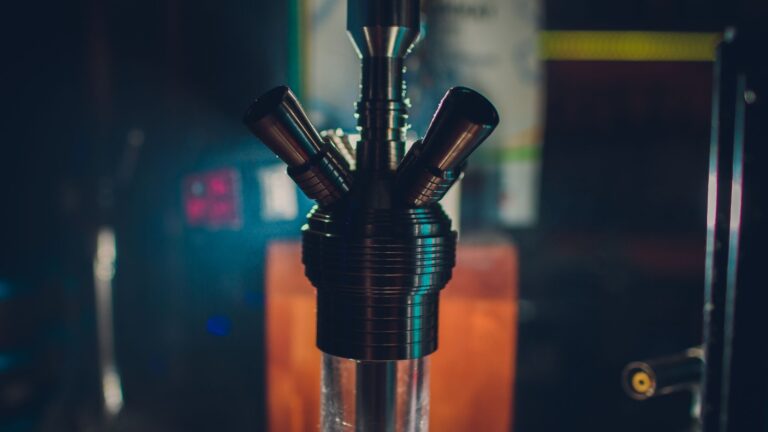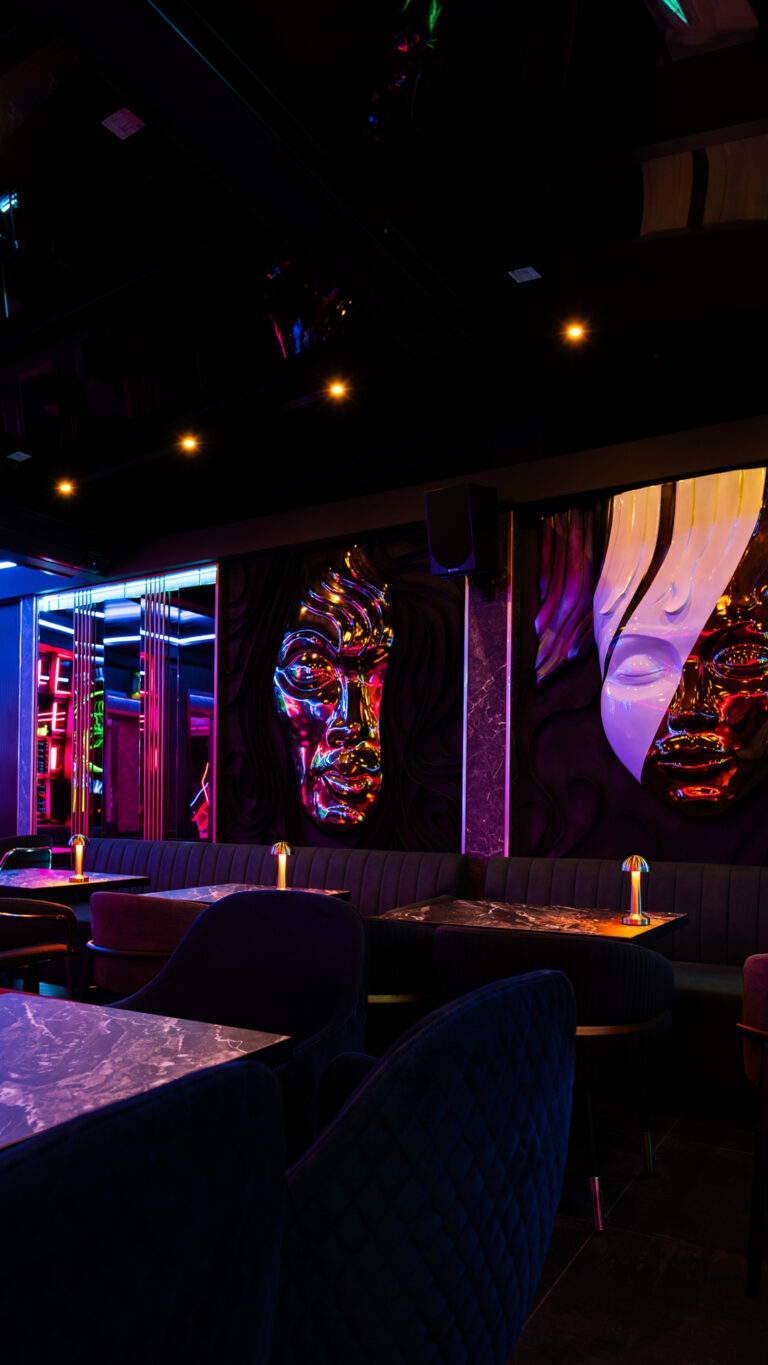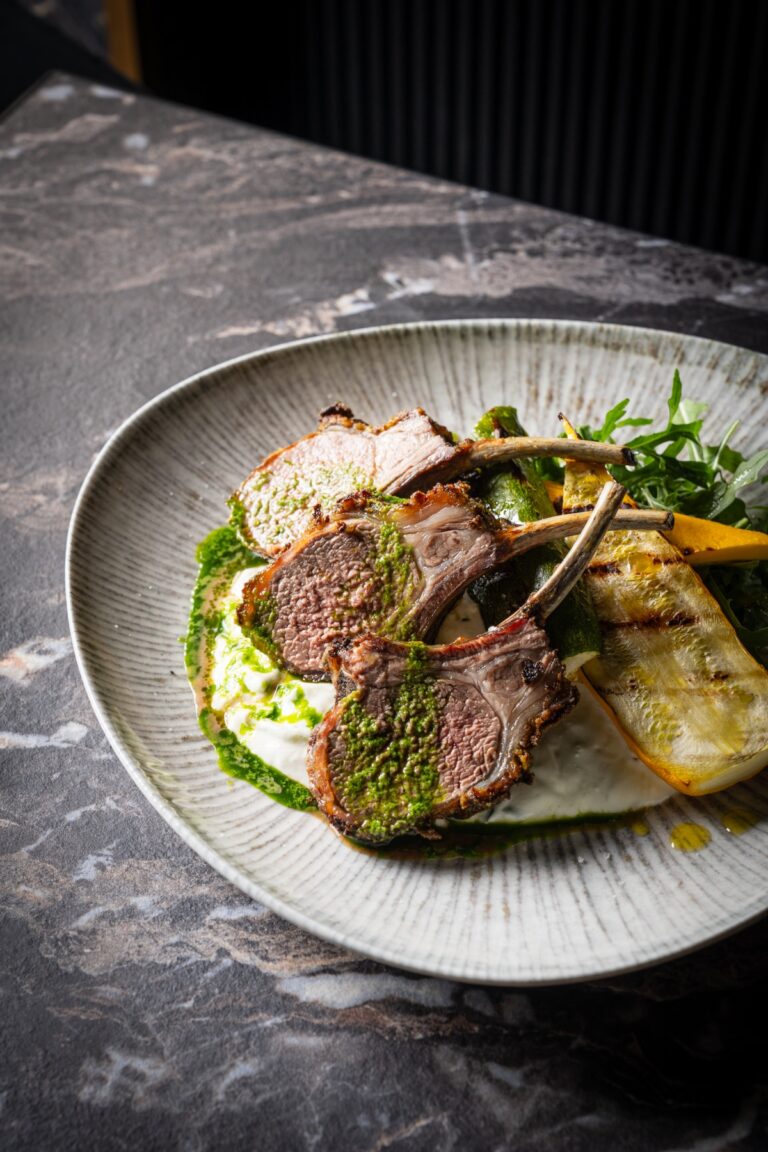Shaken or Stirred? A Beginner’s Guide to Cocktail Terminology
Anyone who’s ever ordered a martini at a bar has likely encountered the classic James Bond moment—the decision between “shaken” or “stirred.” It’s a phrase so iconic that it’s practically a rite of passage for cocktail beginners. But what does it actually mean? Is there a difference? And should we really take our drink cues from a fictional British spy with a license to kill?
Cataleya Resto & Lounge: redefining cocktails in North London
Drawing inspiration from the luxurious flair of Mayfair, Cataleya offers a refined yet approachable dining experience. From exquisitely plated Mediterranean dishes to carefully crafted cocktails and premium shisha, every element is curated to elevate your evening.
Shaken, Stirred, or Built – What’s the Difference?
| Mixing Method | When to Use | Texture & Visual Result | Examples from Cataleya |
|---|---|---|---|
| Shaken | When cocktail contains citrus, juice, cream, or syrup | Frothy, chilled, slightly diluted, with aeration | Margarita, Virgin Mojito, Strawberry Daiquiri |
| Stirred | For spirit-only drinks to maintain clarity and texture | Silky, smooth, minimal aeration, crystal clear | Martini, Negroni, Amaretto Sour |
| Built | For simple, layered drinks served in the glass they’re made in | Visually layered, casual, often with carbonation | Gin & Tonic, Tequila Sunrise, Rum & Coke |
When to Shake a Cocktail
Shaking is used when a cocktail contains non-alcoholic or opaque ingredients like citrus juice, egg whites, cream, or syrups. These ingredients need more forceful integration than a simple stir can provide. Shaking not only combines the components thoroughly but also rapidly chills the drink and introduces tiny air bubbles, giving the cocktail a light, frothy texture.
Shaken cocktails are lively, refreshing, and often vibrant in both appearance and flavor. The movement of the ice through the shaker also contributes just the right amount of dilution, softening the alcohol and making the drink more balanced.
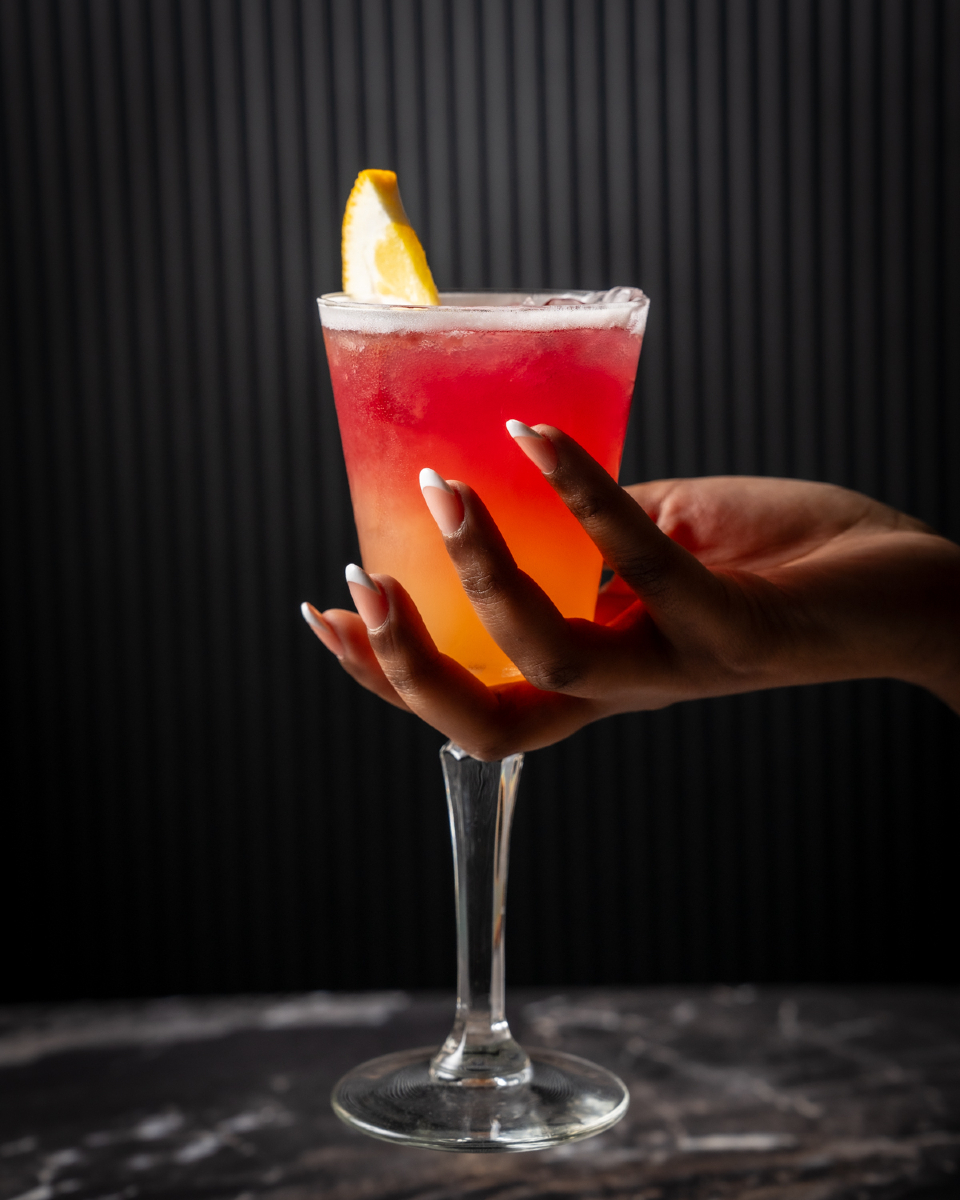
Shaken cocktail examples from Cataleya:
Virgin Mojito (Classic, Passionfruit, Strawberry): Fresh mint, lime, and syrup require energetic blending to release aromas and balance flavors.
Margarita or Spiced Margarita: The lime juice and syrup blend seamlessly through shaking.
Strawberry Daiquiri: Fruit and spirit combine beautifully when shaken to produce a chilled and velvety texture.
When to Stir a Cocktail
If a drink contains only alcoholic ingredients—think spirits, liqueurs, or fortified wines like vermouth—stirring is the preferred method. Stirring gently chills and dilutes the drink without incorporating air, which preserves the smooth, silky mouthfeel and flavor integrity of the spirits.
Unlike shaking, which can cloud a cocktail, stirring produces a crystal-clear drink with a rich, velvety texture. These are often referred to as spirit-forward cocktails, where each ingredient plays a prominent role.
Stirred cocktail examples from Cataleya:
Classic Martini: Whether you opt for gin or vodka, a stirred martini retains its crisp clarity.
Negroni: Composed of gin, vermouth, and Campari—each sip should be bold and balanced.
Amaretto Sour (if served without citrus twist): Occasionally stirred when simplified to base spirit and liqueur.
When to Build a Cocktail
Built cocktails are mixed directly in the serving glass. There’s no shaking or stirring involved. This technique is ideal for simple drinks that rely on layering, carbonation, or freshness, and don’t require complex integration. The drink is assembled piece by piece, often over ice, allowing flavors to mingle naturally.
Built cocktails are quick to make, visually appealing, and often perfect for casual sipping. Many classic long drinks are built, which is why they’re commonly served in highball or Collins glasses.
Built cocktail examples from Cataleya:
Gin & Tonic: Built over ice in a tall glass to preserve effervescence.
Tequila Sunrise: Layered directly for a signature sunrise effect.
Rum & Coke or Whiskey & Soda: Classic highball combinations.
Bonus Tip: Why Some Cocktails Are Served “Up” and Others “On the Rocks”
Another common point of confusion in cocktail terminology is the difference between “up” and “on the rocks.”
Up (or straight up) means the cocktail is chilled—either by shaking or stirring—but then strained and served without ice, typically in a stemmed glass like a coupe or martini glass. Drinks served up include martinis and Manhattans, as this preserves the temperature without further dilution.
On the Rocks means the cocktail is served over ice cubes, often in a lowball or rocks glass. This method slowly dilutes the drink, making it evolve over time. It’s ideal for drinks like Old Fashioneds or any spirit you’d like to mellow as you sip.
At Cataleya, you’ll find both styles represented on the menu, with bartenders ready to guide your choice based on the drink and your personal preferences.
Essential Cocktail Tools & Techniques
Mastering the bartender’s toolkit
Behind every great cocktail is a well-equipped bar. Whether you’re enjoying a signature drink at Cataleya or experimenting at home, understanding the tools used by professional bartenders will help you appreciate the craftsmanship behind each cocktail.
Boston Shaker vs. Cobbler Shaker
There are two main types of shakers used in mixology: the Boston shaker and the Cobbler shaker.
Boston Shaker
Design: Two pieces – one large tin and either a smaller tin or a mixing glass.
Pros: Preferred by professionals for its speed and efficiency; fewer parts, easy to clean.
Cons: Requires a separate strainer (typically a Hawthorne strainer).
Cobbler Shaker
Design: Three pieces – a metal tin, built-in strainer, and cap.
Pros: Easier for beginners; all-in-one design.
Cons: Can be harder to open once sealed; more difficult to clean due to multiple components.
At Cataleya, our bartenders primarily use Boston shakers for their versatility and control.
Other Essential Tools Behind the Bar
Hawthorne Strainer
Used with a Boston shaker, this coiled strainer catches ice and pulp, delivering a clean pour. It’s essential for shaken drinks served “up.”
Bar Spoon
A long, spiraled spoon designed for smooth stirring, especially in tall mixing glasses. It can also be used to layer drinks by slowing the pour of liquids.
Muddler
Used to crush herbs, fruits, or sugar cubes in the bottom of a glass, releasing essential oils and flavors. A must-have for mojitos and mint juleps.
Jigger
A dual-sided measuring tool (usually 1 oz and 1.5 oz) that ensures precise pouring—critical for balanced cocktails.
Pour Spout
A small nozzle that fits onto a liquor bottle and controls the flow rate. This allows for consistent measurements with time-based “counts” rather than guesswork.
Why Dilution and Temperature Are Crucial
While it might seem counterintuitive, diluting a cocktail with water is often exactly what makes it enjoyable. The right level of dilution smooths the harsh edge of high-proof alcohol and allows flavors to meld together. That’s why shaking or stirring with ice is never skipped in professional bartending—it’s not just about chilling, it’s about perfecting the flavor.
Underdiluted cocktails can taste overly strong or unbalanced. Overdiluted drinks, on the other hand, lose their character. The sweet spot is achieved through careful technique, often developed over years of practice—something the bartenders at Cataleya know well.
Visual Appeal: The Role of Ice, Glassware, and Garnishes
Craft cocktails don’t just taste good—they look good too. The presentation is an essential part of the experience, enhancing both visual pleasure and aroma.
Ice Type: Large ice cubes melt more slowly, reducing dilution—ideal for sipping spirits on the rocks. Crushed ice is used in tiki and julep-style cocktails for faster chilling.
Glassware: Each cocktail has a glass that suits its structure and style. Coupes elevate shaken drinks served up, while rocks glasses showcase spirit-forward mixes.
Garnishes: From citrus twists to mint sprigs, garnishes aren’t just decorative. They introduce aromatic oils and visual contrast that elevate every sip.
At Cataleya, every cocktail is a multi-sensory experience—from the chill of the glass to the scent of expressed citrus peel hovering over the rim.
Cocktail Terminology 101 – Glossary of Essential Terms
Understanding the language of cocktails is the first step toward becoming a confident connoisseur—or simply ordering your drink with style. Below is a curated glossary of essential cocktail terms, designed for beginners yet thorough enough for enthusiasts. Whether you’re visiting Cataleya Resto & Lounge or exploring mixology at home, this A–Z guide will help you navigate cocktail menus, bar conversations, and your own taste preferences with ease.
Core Mixing Terms
Shaken
A cocktail is “shaken” when its ingredients are mixed vigorously with ice in a cocktail shaker, usually for 10–15 seconds. Shaking adds aeration and chills the drink quickly, often producing a frothy texture and fine ice crystals.
Usage: Margaritas, mojitos, and espresso martinis are commonly shaken.
Stirred
This gentler technique involves mixing ingredients with ice using a bar spoon, then straining into a glass. It’s used for all-spirit drinks to maintain clarity and a silky mouthfeel.
Usage: Martinis and negronis are classic stirred cocktails.
Neat
Refers to a spirit served alone, without ice, water, or mixer, at room temperature. Typically used for top-shelf liquors.
Usage: “I’ll take a bourbon, neat.”
Dirty
When olive brine or juice is added to a martini, making the drink slightly cloudy and giving it a salty depth.
Usage: A “dirty martini” includes olive juice in addition to gin or vodka and vermouth.
Dry
Used to describe cocktails with less sweetness. In martinis, “dry” means using less vermouth.
Usage: “I’d like a dry gin martini” implies minimal vermouth.
Up
A drink that is shaken or stirred with ice, then strained and served in a stemmed glass with no ice in the final presentation.
Usage: “I’ll take my Manhattan up.”
On the Rocks
A drink served over ice cubes in a lowball or rocks glass. Slows dilution and mellows flavor over time.
Usage: “Scotch on the rocks, please.”
Essential Tools and Techniques
Jigger
A double-ended measuring tool for pouring precise amounts of liquor, usually 1 oz and 1.5 oz.
Usage: Cataleya bartenders use jiggers to ensure perfect ratios in every cocktail.
Muddler
A blunt-ended tool used to crush herbs, fruits, or sugar in the bottom of a glass to release flavors.
Usage: Mint is muddled in the base of a mojito.
Garnish
A visual and aromatic accent to a cocktail, often edible. Garnishes include citrus twists, fruit wedges, herbs, or even flowers.
Usage: A lemon twist in a martini enhances its citrus aroma.
Bitters
Highly concentrated extracts made from roots, herbs, and botanicals used in drops or dashes to enhance flavor complexity.
Usage: Angostura bitters are a key ingredient in an Old Fashioned.
Float
Pouring a small amount of liquid over the top of a cocktail to create a layered effect.
Usage: Grenadine is floated over a Tequila Sunrise for visual contrast.
ABV (Alcohol by Volume)
The standard measure of alcohol content in a beverage, expressed as a percentage.
Usage: Most spirits at Cataleya range from 35–45% ABV.
Proof
A U.S. system for expressing alcohol content, calculated as double the ABV.
Usage: A vodka labeled 80 proof contains 40% alcohol.
Spirits – The Foundations of Every Cocktail
Vodka
A neutral, clear spirit often made from grains or potatoes. Known for its smoothness and versatility.
Usage: Featured in Cataleya’s Pornstar Martini and Espresso Martini.
Gin
A spirit distilled with juniper berries and botanicals. Dry and herbal in profile.
Usage: The star of the classic gin & tonic and the martini.
Rum
Distilled from sugarcane or molasses. Ranges from light and sweet to dark and spiced.
Usage: Cataleya’s Mai Tai and Pina Colada both showcase rum.
Tequila
Made from Blue Weber agave, tequila can be blanco (unaged), reposado (aged 2–12 months), or añejo (aged over a year).
Usage: Tequila-based Margaritas and Tequila Sunrise are Cataleya favorites.
Cognac
A type of brandy made in the Cognac region of France and aged in oak barrels. Rich, smooth, and luxurious.
Usage: Enjoyed neat, or used in upscale cocktails like the Sidecar.
Whiskey (or Whisky)
Aged spirit distilled from grain mash. Includes bourbon, rye, Scotch, and Irish whiskey.
Usage: Found in Whiskey Sours or served “neat” at Cataleya.
Popular Liqueurs in Mixology
Amaretto
A sweet, almond-flavored liqueur made from apricot pits or almonds.
Usage: A key ingredient in an Amaretto Sour.
Triple Sec
A clear, orange-flavored liqueur used in many citrus-based cocktails.
Usage: Found in Margaritas and Cosmopolitans.
Curaçao
Flavored with dried orange peel, this liqueur comes in multiple colors (notably blue) and adds citrus notes.
Usage: Adds color and flavor to tropical drinks.
More Tools & Techniques You Should Know
Boston Shaker
A two-piece shaker (metal tin + mixing glass or second tin) used to shake cocktails. Favored by professionals for efficiency.
Usage: Used to shake La Pasteque and Narcos Ratas at Cataleya.
Cobbler Shaker
A three-piece shaker with a built-in strainer. Convenient for beginners.
Usage: Common in home bartending setups.
Hawthorne Strainer
Used to strain shaken or stirred drinks from a shaker, thanks to its signature coiled spring.
Usage: Ensures a clean pour without ice shards.
Mixing Methods and Flavor Enhancers
Muddling
Crushing herbs or fruit in the glass to release natural oils and aromas.
Usage: Essential in a Virgin Mojito for extracting mint flavor.
Layering
Gently pouring one liquid over another to create distinct layers in the drink.
Usage: A Tequila Sunrise is a classic layered cocktail.
Double Strain
Using both a Hawthorne strainer and a fine mesh strainer to remove pulp or ice chips from a shaken drink.
Usage: Common in cocktails that use muddled fruit or egg white.
Expressing
Twisting a citrus peel over the surface of the cocktail to release aromatic oils.
Usage: Often done with lemon or orange peels over martinis.
Other Cocktail Terms to Know
Angel’s Share
The small amount of spirit that evaporates during barrel aging.
Usage: Referenced when discussing aged liquors like whiskey or cognac.
Aged
Indicates a spirit has been stored in barrels to develop complexity.
Usage: Tequilas labeled “Añejo” have been aged for 1–3 years.
Infused
Spirits or syrups that have been flavored by soaking ingredients like herbs, fruit, or spices.
Usage: A house-made rosemary-infused vodka adds depth to signature drinks.
Sour Mix
A blend of lemon or lime juice and simple syrup, used in cocktails like whiskey sours.
Usage: Preferably made fresh at Cataleya for balanced flavor.
Twist
A thin strip of citrus peel used as a garnish. Sometimes expressed over the drink for aroma.
Usage: “Martini with a twist” adds lemon oil and zest to the drink.
Rim
Coating the edge of a glass with salt or sugar to enhance taste and presentation.
Usage: Salted rims are iconic for margaritas.
Glassware Matters: What to Serve Cocktails In
Martini Glass vs. Coupe Glass
Martini Glass
With its iconic inverted triangle shape and long stem, the martini glass is instantly recognizable. Its wide brim allows for maximum exposure to aroma, while the stem prevents body heat from warming the drink.
Best for: Martinis, Manhattans, Cosmopolitans.
Coupe Glass
The coupe features a shallower, rounder bowl and stem, originally designed for champagne. Today, it’s a popular choice for shaken or stirred cocktails served “up”, offering a touch of vintage charm.
Best for: Daiquiris, Margaritas (served up), Bartender’s special shaken drinks.
Rocks Glass (Old-Fashioned Glass)
Short, wide, and sturdy, the rocks glass—also known as an Old-Fashioned glass—is ideal for drinks served over ice. The wide mouth allows for large ice cubes and easy muddling.
Best for: Whiskey on the rocks, Old Fashioned, Negroni.
Highball Glass
Tall and narrow, the highball glass is perfect for built drinks with mixers, especially those with carbonation. Its shape retains bubbles and keeps long drinks chilled.
Best for: Gin & Tonic, Vodka Soda, Rum & Coke.
Collins Glass
Similar in shape to a highball but typically taller and slimmer, the Collins glass is used for cocktails requiring more mixer or soda water.
Best for: Mojito, Tom Collins, Virgin Lemonade.
Cataleya’s presentation style
At Cataleya, every drink is curated from top to bottom—including the glass. The Espresso Martini is served in a chilled martini glass with a smooth crema finish. The Narcos Ratas, with its bold flavor, is presented in a rocks glass to allow for savoring over time. Mocktails like the Virgin Mojito are served in tall highball glasses packed with fresh herbs and crushed ice, maximizing both flavor and visual delight.
Glassware at Cataleya isn’t just functional—it’s part of the experience.
Signature Cocktails at Cataleya Resto & Lounge
Where creativity meets craft
Cataleya Resto & Lounge in Southgate doesn’t just follow cocktail trends—it sets them. The bar team here blends premium spirits with fresh ingredients and innovative techniques to create a signature cocktail list that is both accessible and refined. Whether you’re seeking something fruity, bold, classic, or alcohol-free, there’s something on the menu for every palate.
Let’s take a closer look at Cataleya’s standout offerings.
House Signature Cocktails
| Cocktail Name | Main Ingredients | Flavor Profile | Recommended Pairing |
|---|---|---|---|
| Cataleya Special | Vodka, passionfruit, watermelon, mint | Fruity, refreshing, elegant | Seafood dishes, bruschetta |
| Narcos Ratas | Rum, Disaronno, orgeat, bitters, lime | Nutty, rich, balanced with citrus | Grilled red meat, pasta |
| La Pasteque | Vodka, amaro, peach schnapps, lime | Sweet with bitter undertone, peachy | Chicken skewers, mixed platters |
| Geisel (Mocktail) | Cranberry juice, passionfruit syrup, lime | Tangy, fruity, light | Salads, premium shisha |
Cataleya Special
Vodka, passionfruit, watermelon & mint
Fresh, vibrant, and refreshingly smooth. This signature drink embodies Cataleya’s fusion of elegance and energy. The sweetness of watermelon and tartness of passionfruit is balanced with cooling mint—served beautifully in a coupe glass for maximum aroma.
Narcos Ratas
Rum, Disaronno, orgeat, Angostura bitters, lime juice
Rich and complex, this cocktail has a dark, nutty base with a citrus lift. The orgeat (almond syrup) pairs harmoniously with Disaronno, while bitters provide a warming finish. Served in a rocks glass—perfect for slow sipping.
La Pasteque
Vodka, amaro, peach schnapps & lime
A bold and fruity combination with just enough bitterness from the amaro to keep it sophisticated. The citrus and peach notes make it an excellent cocktail for early evening enjoyment.
Bartender’s Daily Special
The wildcard on the menu. Made fresh each day, the Bartender’s Special is a one-of-a-kind creation based on seasonal ingredients and the bartender’s inspiration. Ask your server what’s featured today.
Beloved Classic Cocktails
For guests who prefer timeless elegance, Cataleya offers a curated selection of classic cocktails, all expertly prepared.
Espresso Martini – A rich, coffee-forward drink with vodka and fresh espresso, perfect after dinner.
Pornstar Martini – Passionfruit-forward, served with a Prosecco shot on the side.
Mojito (Classic, Strawberry, Passionfruit) – Refreshing and aromatic, made with fresh mint and lime.
Margarita or Spiced Margarita – Tart, bright, and balanced, with the option of a salted rim.
Strawberry Daiquiri – Sweet and smooth, always served ice cold.
Mocktails: Bold flavor, no alcohol
Non-alcoholic doesn’t mean boring. Cataleya’s mocktail selection is crafted with just as much attention as the signature list.
Isla
Orange juice, bubblegum syrup, sugar & fresh lime
A whimsical and refreshing drink that surprises with every sip.
Geisel
Cranberry juice, passionfruit syrup & fresh lime
Tangy, fruity, and beautifully balanced—ideal for those seeking a light yet flavorful mocktail.
Virgin Mojito
Available in classic, strawberry, or passionfruit versions. Made with fresh mint and citrus, these mocktails are a staple for daytime refreshment or pairing with premium shisha.
Pairing suggestions
Cataleya’s Mediterranean cuisine and premium shisha flavors pair excellently with the drink menu. For example:
Cataleya Special pairs wonderfully with grilled seafood or bruschetta.
Narcos Ratas complements red meat dishes and rich pastas.
Virgin Mojito is perfect with light starters or while enjoying Adalya or Irn Bru shisha blends.
Every pairing is designed to enhance flavor and experience, whether you’re dining, sipping, or relaxing with friends.
The Cataleya Experience: Where Atmosphere Meets Flavor
Cataleya Resto & Lounge is not just a place to enjoy a meal or a drink—it’s a destination. From the moment you step into our Southgate location, you’re immersed in an atmosphere that balances sophistication with comfort, elegance with energy. Inspired by the glamour of Mayfair yet grounded in North London authenticity, Cataleya creates an environment where food, drink, and ambiance come together in perfect harmony.
A trio of indulgence: cuisine, cocktails, and shisha
Our Mediterranean-inspired cuisine blends seasonal ingredients and timeless recipes with modern flair. Every dish—from fried calamari to grilled meats and gourmet pizzas—is crafted to delight the palate and complement our robust beverage menu.
On the drinks side, Cataleya’s cocktail program is at the heart of the experience. Whether you choose a house signature like the Cataleya Special, a bold classic like the Espresso Martini, or a carefully crafted mocktail like Geisel, each drink is executed with precision and passion.
And of course, no visit is complete without exploring our premium shisha lounge. Offering a curated selection of finest shisha flavors, including Irn Bru and Adalya, our shisha experience is designed to transport you—relaxing, aromatic, and always memorable.
Why Cataleya is the best shisha lounge in North London
Cataleya stands apart because we combine quality, ambiance, and service like no one else. Our dedicated shisha experts tailor each session to your preferences. Our bartenders craft cocktails that are as beautiful as they are balanced. And our servers deliver with a warmth and attentiveness that keeps guests returning again and again.
Whether you’re a seasoned cocktail enthusiast or someone simply exploring your first mojito, Cataleya welcomes you. We’ve designed our space and experience to serve everyone—from first-timers looking for atmosphere to connoisseurs seeking depth in every detail.
Reserve your evening at Cataleya
If you haven’t visited yet, now is the time. Reserve your table for an unforgettable night of flavor and ambiance, or simply walk in and let us surprise you. Please note that we operate a 2-hour seating policy on weekends to ensure all our guests enjoy the Cataleya standard of service.
Frequently Asked Questions (FAQ)
What does it mean when a cocktail is “shaken”?
Shaking is a method used to combine ingredients with different densities, such as juice, syrup, and alcohol. It chills the cocktail quickly and adds texture through aeration. You’ll often see citrus-based drinks like Margaritas or Daiquiris shaken to ensure even flavor.
Which cocktails should be stirred, not shaken?
Cocktails that are composed entirely of spirits—such as Martinis, Negronis, and Manhattans—are best stirred. Stirring gently chills and dilutes the drink while preserving the clarity and texture, making it smooth and spirit-forward.
What’s the difference between “neat” and “up”?
Neat means a spirit is served without ice, mixer, or water, typically in a lowball glass at room temperature.
Up (or “straight up”) means the cocktail is chilled (via shaking or stirring) and then strained into a stemmed glass with no ice. It’s colder than “neat” and used for many classic cocktails.
Can I request a mocktail version of any cocktail?
Absolutely. At Cataleya, our bartenders are more than happy to create non-alcoholic versions of popular cocktails using fresh juices, syrups, and garnishes. You can also choose from our dedicated mocktail menu, which includes creations like Virgin Mojito, Isla, and Geisel

